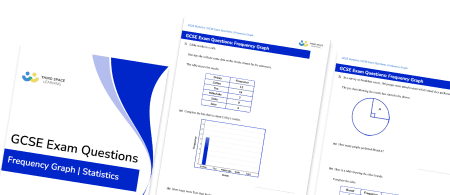FREE DOWNLOAD
Two Way Tables Worksheet

Help your students prepare for their Maths GCSE with this free two way tables worksheet of 43 questions and answers
- Section 1 of the two way tables worksheet contains 36 skills-based two way tables questions, in 3 groups to support differentiation
- Section 2 contains 4 applied two way tables questions with a mix of worded problems and deeper problem solving questions
- Section 3 contains 3 foundation and higher level GCSE exam style two way tables questions
- Answers and a mark scheme for all two way tables questions are provided
- Questions follow variation theory with plenty of opportunities for students to work independently at their own level
- All teaching resources created by fully qualified expert secondary maths teachers
Suitable for GCSE maths revision for AQA, OCR and Edexcel exam boards
Unlock access to download your free resource
You can unsubscribe at any time (each email we send will contain an easy way to unsubscribe). To find out more about how we use your data, see our privacy policy.
Two way tables at a glance
Two way tables (or contingency tables) are used when data can be categorised in more than one way. For example, if collecting data on the favourite colours of students in a high school class, we could further split this data by gender – so rather than just display the total number of students that liked green, we could see the number of girls and the number of boys that chose green as their favourite.
A two way table can also be constructed to display relative frequencies or proportions rather than the raw data – for example, by displaying the percentage of data items in each category.
Students may also be asked to read information from two way tables and use this to solve problems – for example, to calculate the probability of selecting someone within a certain category.
It is likely that students will have prior knowledge of reading tables, including two-way tables and timetables, from their work in Key Stage 2.
Looking forward, students can then progress to additional Statistics worksheets, for example an averages worksheet or frequency table worksheet.

For more teaching and learning support on Statistics our GCSE maths lessons provide step by step support for all GCSE maths concepts.
Do you have GCSE students who need additional support?

There will be students in your class who require individual attention to help them achieve their target GCSE maths grade. In a class of 30, it’s not always easy to provide.
Help your students feel confident with exam-style questions and the strategies they’ll need to answer them correctly with personalised online one to one tutoring from Third Space Learning
Lessons are selected to provide support where each student needs it most, and specially-trained GCSE maths tutors adapt the pitch and pace of each lesson. This ensures a personalised revision programme that raises grades and boosts confidence.








